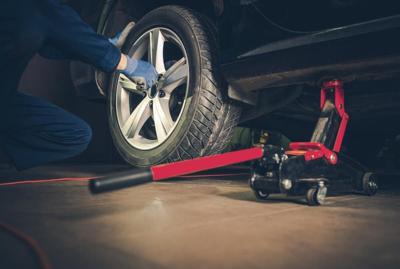Birds are chirping, leaves are sprouting, and road trips beckon ŌĆ”. ItŌĆÖs time to change your tires over.
The average temperature is well above the 7C threshold tire manufacturersŌĆÖ note as the point below which a dedicated winter tire begins to provide better traction than all-season rubber.
Most service facilities and tire shops will be plenty busy for the next several weeks or more, so, if you havenŌĆÖt already made an appointment to change them by now, you may find yourself having to wait in line. There are few alternatives; , for example, provides appointment-free tire changes on a first-come, first-served basis. Other outlets specializing in changing oil do, too. Or you can do it yourself ŌĆ” provided that your alternate set of tires are mounted on their own set of wheels.
There are advantages to taking your vehicle to a proper garage and having the service performed by a qualified tech for the changeover. This represents the perfect opportunity to check the suspension and brakes, especially as your brakes are largely contained within, and obscured by, the wheels. The well-meaning folks at the quick-lube donŌĆÖt specialize in brake inspections. (Most of these businesses donŌĆÖt do much other mechanical work beyond fluid and filter changes.)
If you are thinking of doing it yourself is, there are some critical things to weigh:
- The vehicleŌĆÖs jack and tools are only intended for emergency use, not performing repairs and maintenance. A proper service jack, safety stands, and chocks should be employed if you donŌĆÖt have a hoist.
- Unless youŌĆÖre mechanically inclined, the chance to check out the brakes, suspension, and steering gets missed.
- Over the winter, corrosion and grime can build up on the mounting surfaces of the wheels and hubs, and it must be removed for the wheels to remain securely in place after they are reinstalled.
- Proper wheel-fastener torque is important; all have specifications. ŌĆ£ThatŌĆÖll doŌĆØ actually wonŌĆÖt (do): too tight can potentially damage studs, and nuts and can be as dangerous if not tight enough. If you are changing your tires yourself, follow the automakerŌĆÖs recommendations and use a torque wrench.
- Tire pressures should be set according the placard on the door or jamb, not the tire sidewallŌĆÖs listed maximum. Digital gauges are inexpensive and more accurate than cheap extending stick-type gauges.
- The tire pressure monitoring systems (TPMS) in many vehicles require special procedures (and sometimes equipment) to ŌĆ£learnŌĆØ the sensors and their locations. (This applies to most TPM systems during rotations, as well.) Others need to be manually reset any time pressures or positions are changed. Consult your manual.
- If the tiresŌĆÖ positions were marked when they were removed, this is a perfect opportunity to rotate them. Follow the manufacturerŌĆÖs guidelines, when available. Mark the winters on the inside sidewall with their current positions, using a tire crayon or chalk, as theyŌĆÖre removed. Keep in mind that directional tires should only be moved on the same side to maintain their correct orientation, and that vehicles with staggered sized tires can only be rotated side to side (and only if theyŌĆÖre not also directional).
Even if youŌĆÖre simply taking your tires with you to have a garage or dealer perform the changeover, you should have some idea of their condition beforehand so you can be better prepared. They should be inspected for wear, visible damage, and cracking, both between the treads and on the sidewalls.
My experience is that tires normally tend to lose only five to 10 psi (pounds per square inch) over a season of storage; one or more abnormally soft tires could indicate a leak from a puncture or wheel corrosion, which should be addressed before theyŌĆÖre put back in use.
Age should also be considered, as the tire industry recommends replacement as early as six years ŌĆö well, they do want to sell you tires, after all ŌĆö and by 10 years, regardless of wear. Rubber does harden and it loses elasticity with age, reducing grip and increasing the possibility of failure. The date of manufacture can be determined by looking at the ŌĆ£DOTŌĆØ serial on the sidewall; one (or both) will end with a numeric code such as ŌĆ£3417ŌĆØ ŌĆö ŌĆ£34ŌĆØ being the week (out of 52) and ŌĆ£17ŌĆØ the year (2017, in this example).
IŌĆÖve already replaced both the original all-season and first winter set of tires on my motherŌĆÖs 2009 Hyundai, which currently has a grand total of 52,000 km. on it. They were far from worn out, but had noticeably reduced wet traction.
If youŌĆÖre in a position of needing, or wanting, new tires for the summer, youŌĆÖll be happy to know that many manufacturers offer rebate programs on sets of four in both the spring and fall. Several programs are now available and are in place until either the end of May or end of June.






















